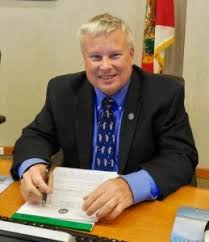Dale Martin
City Manager
Fernandina Beach
January 31, 2020

As has been already reported, the City Commission conducted its annually Visioning Session earlier this week. The City Commission, City staff, local media representatives, and several interested residents or business representatives gathered at the City’s Golf Course for the scheduled day-long session. Although an open public meeting, I do recognize the inability of many public to attend given the daytime meeting (I typically do not support daytime meetings or even meetings as early as 5:00 PM because it creates a perception that public participation is being intentionally minimized).
The primary focus of this year’s session, from my perspective, was to gain consensus on the City Commission’s direction on the long-desired, oft-delayed, perpetually contentious Amelia River waterfront. The waterfront was the City Commission’s predominant goal from last year’s Visioning Session, and as work continues on the Marina itself, several other issues related to the waterfront area (defined by the Commission as the area running from the northern edge of Rayonier Advanced Materials property to the southern edge of the Port of Fernandina, and as far inland as 2nd Street).
This Commission is the first City Commission to have the opportunity to make full use of the inaugural 2017 National Citizen Survey. Specifically, questions on that survey queried respondents to indicate their support for various waterfront activities and if limited to one use, what would be the preferred use of the waterfront.
An overwhelming majority (88%) supported open space. Other uses that drew very strong support were recreational facilities (71%) and parking (68%). When restricted to support a single use, open space registered 33% support and recreational facilities, 27% (all other single preferred uses, including parking, had less than 20% support). With those figures and Commission direction, I set out on the task of putting a waterfront plan together.
With many previous iterations of waterfront designs available, I didn’t believe the “baby needed to be thrown out with the bath water.” I enlisted the assistance of Marquis, Latimer & Halbeck (MLH; led by Mr. Jeremy Marquis) to review the previous designs, finding the common and generally accepted components. MLH was joined by Passero Associates, previously selected by the City Commission to review and recommend shoreline stabilization and protection along the Amelia River waterfront, and Ayres Associates, an engineering firm with professional road design expertise).
I created a Steering Committee composed of the leadership of several boards and commissions that I believed were important to the development process: Ms. Theresa Duncan (Parks and Recreation Advisory Board), Mr. Michael Spino (Historic District Commission), Mr. Kevin McCarthy (Marina Advisory Board), and Ms. Arlene Filkoff (Main Street). The direction to the Steering Committee was to provide comments (in an individual interview) to the consultant team from the perspective of their respective boards as well as share information about the process and progress of the Steering Committee.
The consulting team also met individually with City Commissioners to gain their perspective. In mid-December, the consultants, making use of their review of previous plans and the comments from City Commissioners and the Steering Committee, prepared a series of several conceptual drawings. After reviewing each concept, the Steering Committee independently and unanimously selected the same concept, now designated as Concept E. Concept E addressed the desire for open space and recreational facilities (a dedicated event area and other greenspace) as well as address the concerns related to the loss of parking (no proposed loss of parking).
With the endorsement of the Steering Committee, the consultant team made a similar presentation to the City Commission at the Visioning Session. Recognizing that Concept E is a CONCEPT and not a PLAN, the Commissioners, like the Steering Committee, offered consensus on Concept E. With that critical consensus, I will now instruct the Steering Committee members to solicit comments from their respective boards regarding the conceived outdoor event space, indoor event space, and the reconfiguration of Parking Lots A and B to accommodate greenspace and parking. The issues of the shoreline improvements and the design of the road will be addressed by the consultant team, Florida Department of Transportation staff, and railroad officials: the professional capacity of those personnel will be able to appropriately deal with the constraints and challenges of the shoreline, the road, and the railroad. I expect to conduct a larger public forum regarding the waterfront concept in early March.
This project, as it always has been, is highly visible, and will have alternative views and detractors. The eventual final decision regarding the transition from concept to plan to implementation rests with the City Commissioners, who do their best to represent community, not personal or individual desires. I believe that the City Commissioners are united (and impatient) to move this project forward and I look forward to supporting their direction.
